Abstract
The mode of action of DuP 721 was investigated. This compound was active primarily against gram-positive bacteria, including multiply resistant strains of staphylococci. Although inactive against wild-type Escherichia coli, DuP 721 did inhibit E. coli when the outer membrane was perturbed by genetic or chemical means. Pulse-labeling studies with E. coli PLB-3252, a membrane-defective strain, showed that DuP 721 inhibited amino acid incorporation into proteins. The 50% inhibitory concentration of DuP 721 for protein synthesis was 3.8 micrograms/ml, but it was greater than 64 micrograms/ml for RNA and DNA syntheses. The direct addition of DuP 721 to cell-free systems did not inhibit any of the reactions of protein synthesis from chain initiation through chain elongation with either synthetic or natural mRNA as template. However, cell extracts prepared from DuP 721 growth-arrested cells were defective in initiation-dependent polypeptide synthesis directed by MS2 bacteriophage RNA. These cell-free extracts were not defective in polypeptide elongation or in fMet-tRNA(fMet)-dependent polypeptide synthesis stimulated by poly(G.U). We conclude, therefore, that DuP 721 exerts its primary action at a step preceding the interaction of fMet-tRNA(fMet) and 30S ribosomal subunits with the initiator codon.
Full text
PDF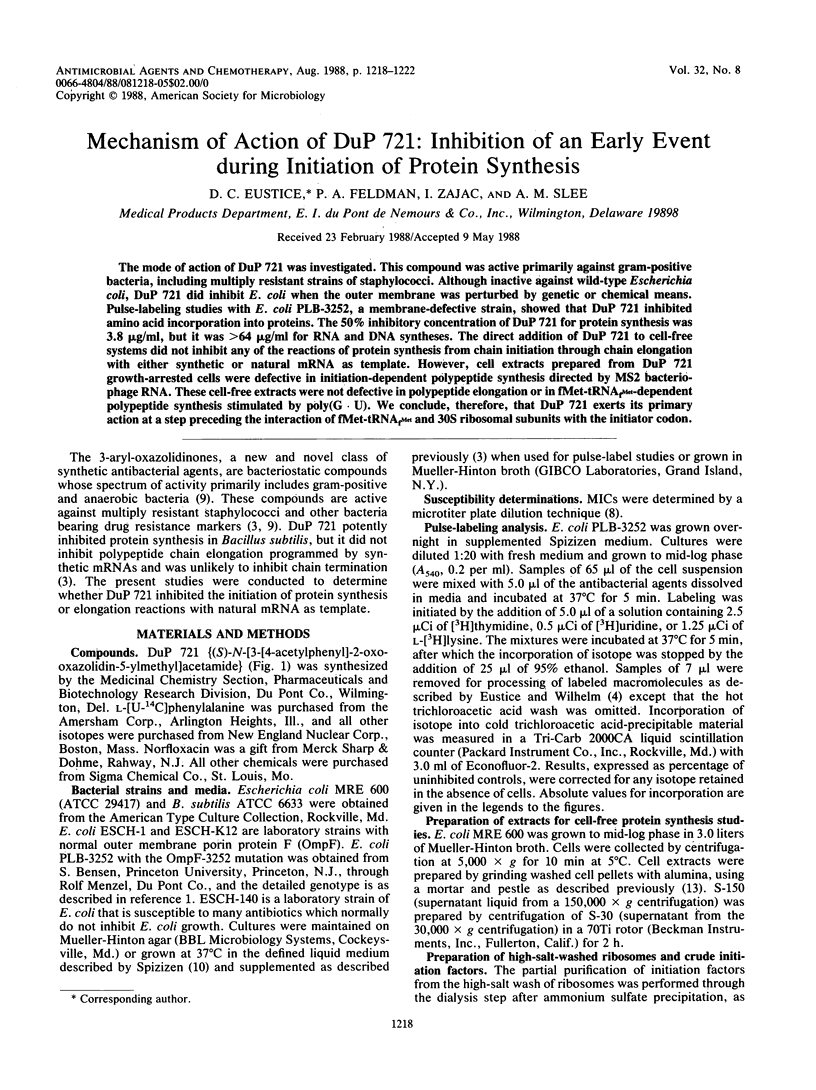
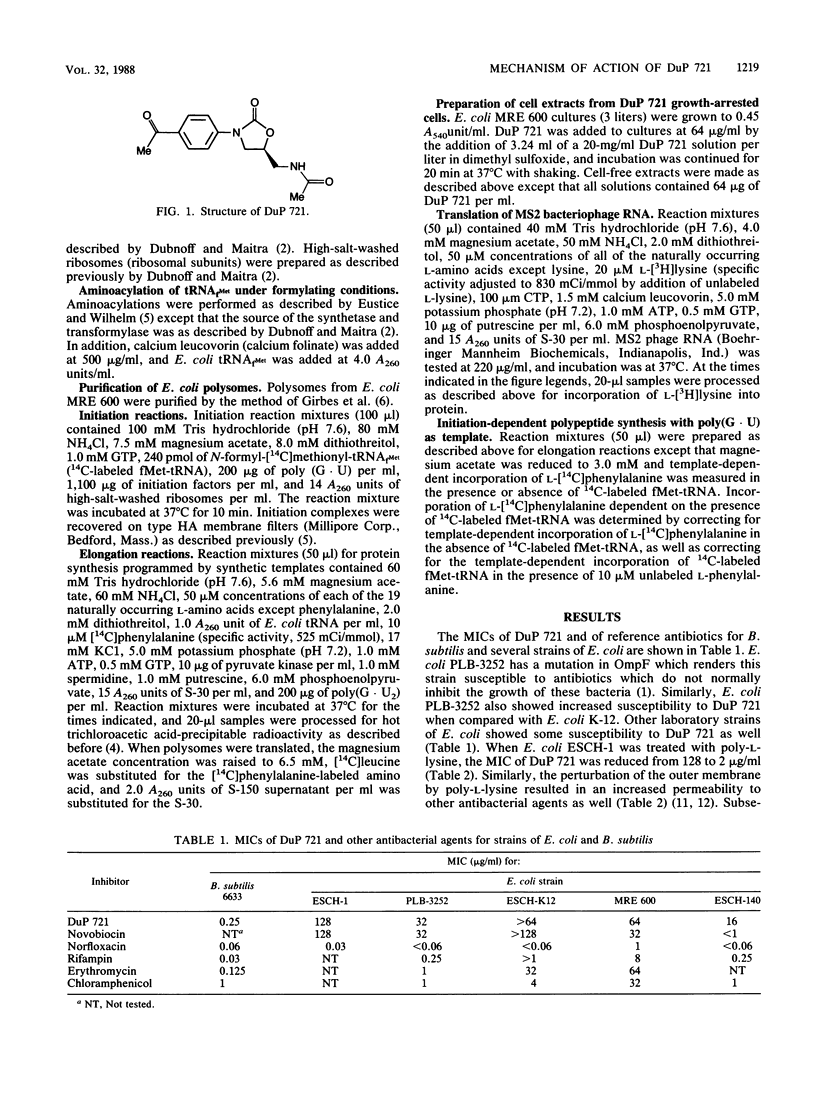
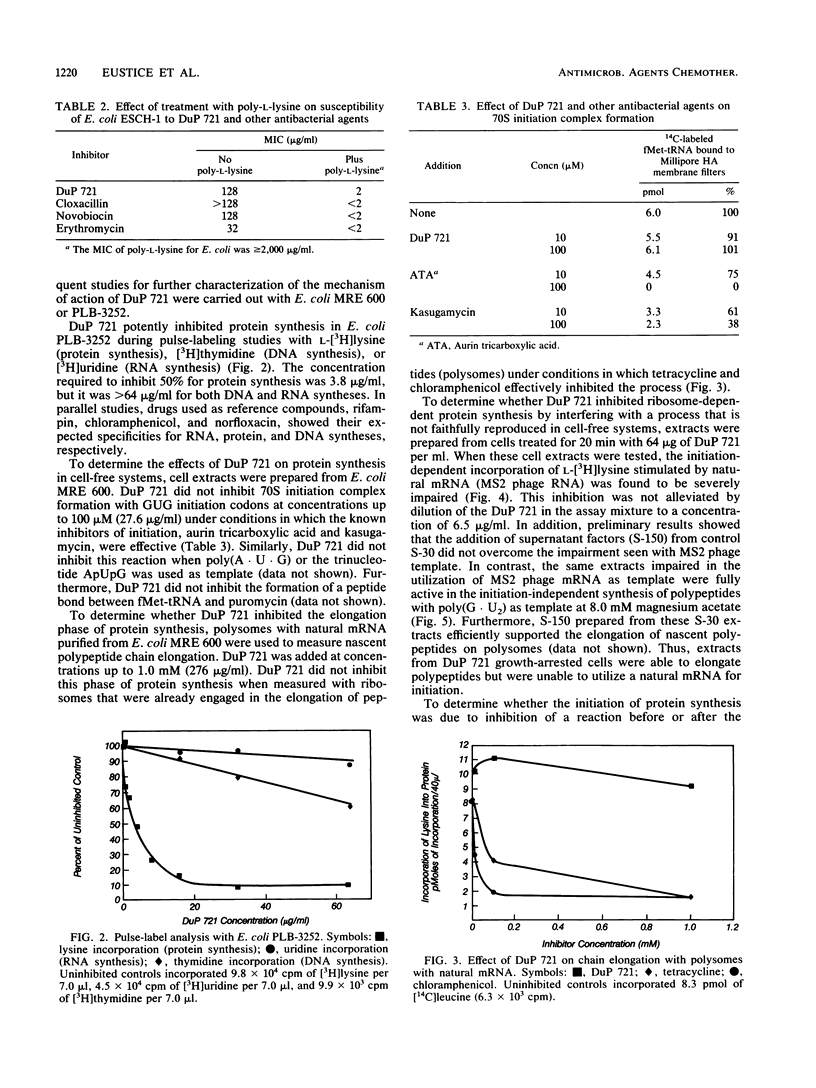
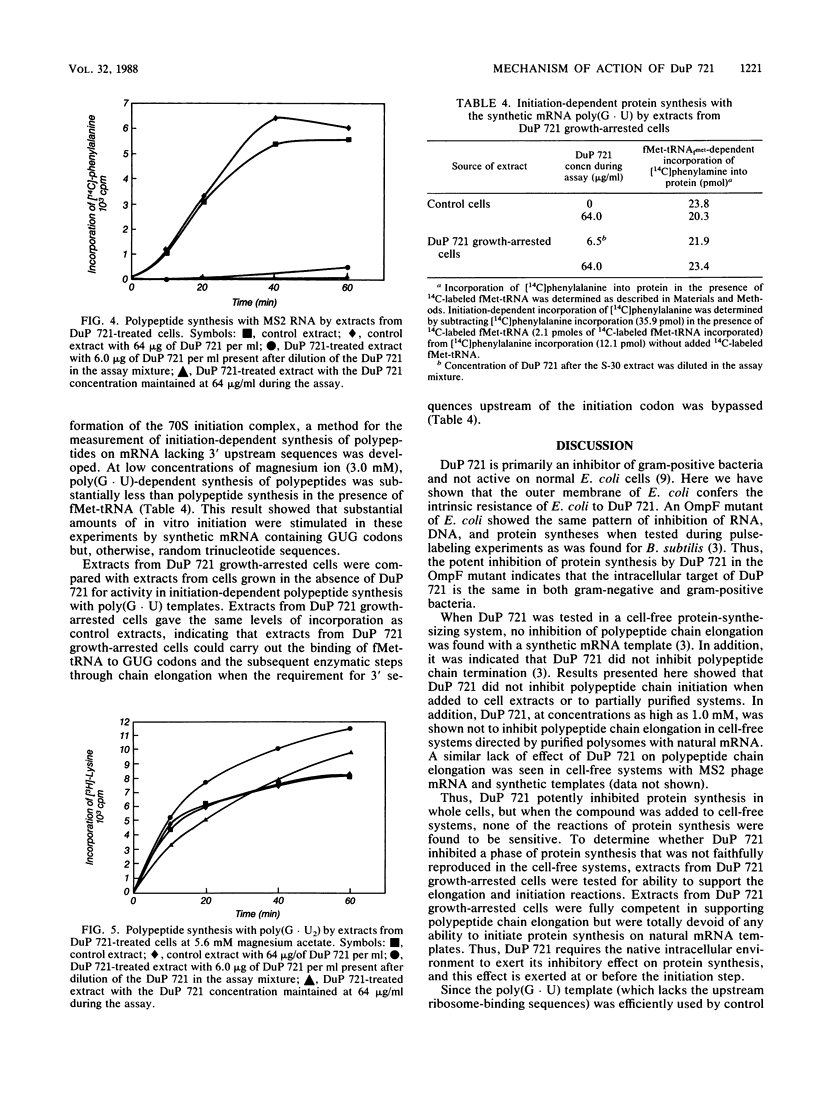
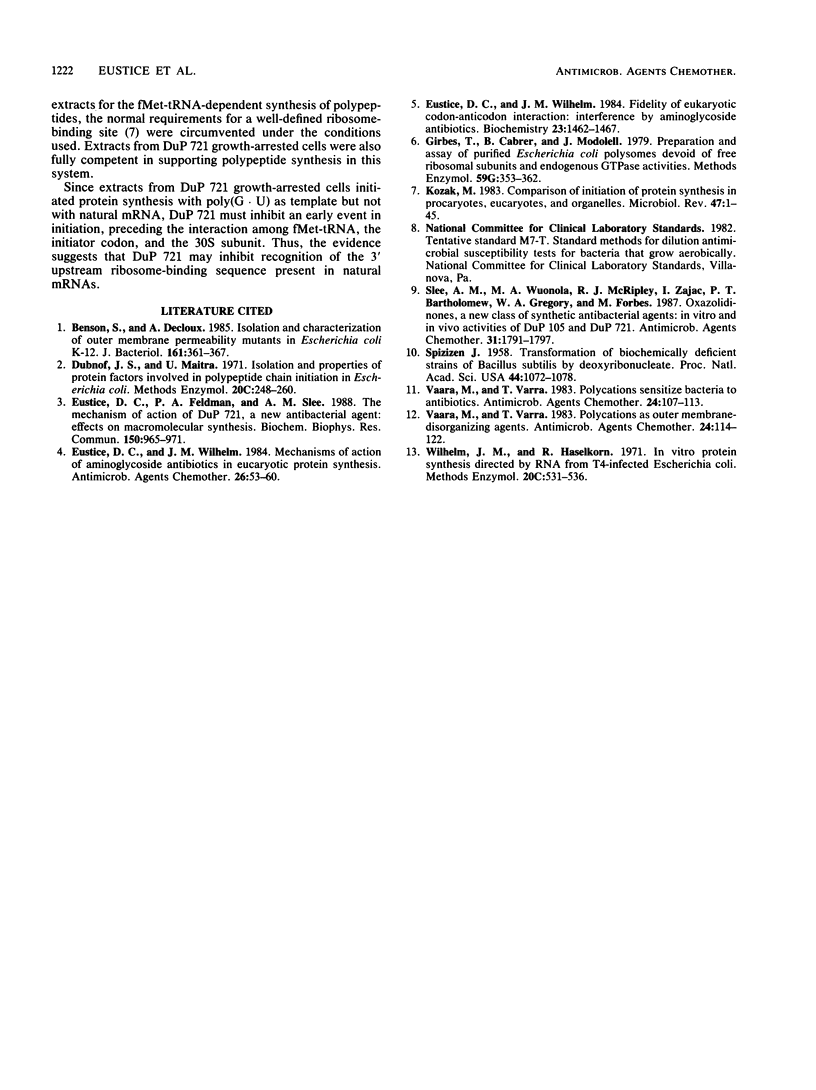
Selected References
These references are in PubMed. This may not be the complete list of references from this article.
- Benson S. A., Decloux A. Isolation and characterization of outer membrane permeability mutants in Escherichia coli K-12. J Bacteriol. 1985 Jan;161(1):361–367. doi: 10.1128/jb.161.1.361-367.1985. [DOI] [PMC free article] [PubMed] [Google Scholar]
- Eustice D. C., Feldman P. A., Slee A. M. The mechanism of action of DuP 721, a new antibacterial agent: effects on macromolecular synthesis. Biochem Biophys Res Commun. 1988 Feb 15;150(3):965–971. doi: 10.1016/0006-291x(88)90723-1. [DOI] [PubMed] [Google Scholar]
- Eustice D. C., Wilhelm J. M. Fidelity of the eukaryotic codon-anticodon interaction: interference by aminoglycoside antibiotics. Biochemistry. 1984 Mar 27;23(7):1462–1467. doi: 10.1021/bi00302a019. [DOI] [PubMed] [Google Scholar]
- Eustice D. C., Wilhelm J. M. Mechanisms of action of aminoglycoside antibiotics in eucaryotic protein synthesis. Antimicrob Agents Chemother. 1984 Jul;26(1):53–60. doi: 10.1128/aac.26.1.53. [DOI] [PMC free article] [PubMed] [Google Scholar]
- Girbés T., Cabrer B., Modolell J. Preparation and assay of purified Escherichia coli polysomes devoid of free ribosomal subunits and endogenous GTPase activities. Methods Enzymol. 1979;59:353–362. doi: 10.1016/0076-6879(79)59096-x. [DOI] [PubMed] [Google Scholar]
- Kozak M. Comparison of initiation of protein synthesis in procaryotes, eucaryotes, and organelles. Microbiol Rev. 1983 Mar;47(1):1–45. doi: 10.1128/mr.47.1.1-45.1983. [DOI] [PMC free article] [PubMed] [Google Scholar]
- Slee A. M., Wuonola M. A., McRipley R. J., Zajac I., Zawada M. J., Bartholomew P. T., Gregory W. A., Forbes M. Oxazolidinones, a new class of synthetic antibacterial agents: in vitro and in vivo activities of DuP 105 and DuP 721. Antimicrob Agents Chemother. 1987 Nov;31(11):1791–1797. doi: 10.1128/aac.31.11.1791. [DOI] [PMC free article] [PubMed] [Google Scholar]
- Spizizen J. TRANSFORMATION OF BIOCHEMICALLY DEFICIENT STRAINS OF BACILLUS SUBTILIS BY DEOXYRIBONUCLEATE. Proc Natl Acad Sci U S A. 1958 Oct 15;44(10):1072–1078. doi: 10.1073/pnas.44.10.1072. [DOI] [PMC free article] [PubMed] [Google Scholar]
- Vaara M., Vaara T. Polycations as outer membrane-disorganizing agents. Antimicrob Agents Chemother. 1983 Jul;24(1):114–122. doi: 10.1128/aac.24.1.114. [DOI] [PMC free article] [PubMed] [Google Scholar]
- Vaara M., Vaara T. Polycations sensitize enteric bacteria to antibiotics. Antimicrob Agents Chemother. 1983 Jul;24(1):107–113. doi: 10.1128/aac.24.1.107. [DOI] [PMC free article] [PubMed] [Google Scholar]


